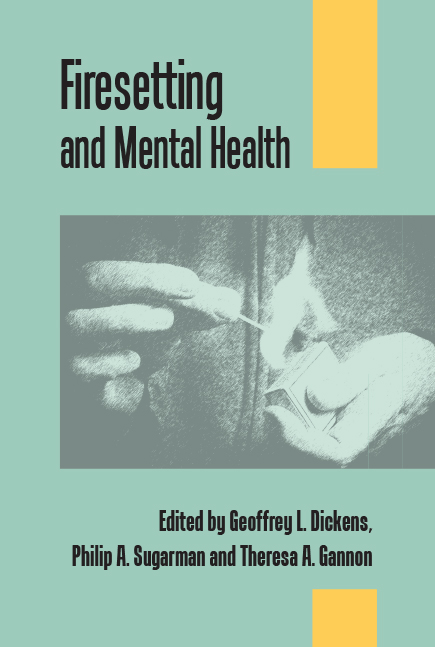Book contents
- Frontmatter
- Contents
- List of figures, tables and boxes
- List of contributors
- Preface
- Part I Theory and research
- 1 Adult firesetters: prevalence, characteristics and psychopathology
- 2 Theories on arson: the action systems model
- 3 Differentiating firesetters: lessons from the literature on motivation and dangerousness
- 4 The potential relevance of brain dysfunction in arson
- 5 The developmental aspects of firesetting
- 6 Intellectual disability and arson
- 7 Female arsonists and firesetters
- 8 Power and excitement in arson: the case of firefighter arson
- Part II Practice and law
- Index
8 - Power and excitement in arson: the case of firefighter arson
from Part I - Theory and research
- Frontmatter
- Contents
- List of figures, tables and boxes
- List of contributors
- Preface
- Part I Theory and research
- 1 Adult firesetters: prevalence, characteristics and psychopathology
- 2 Theories on arson: the action systems model
- 3 Differentiating firesetters: lessons from the literature on motivation and dangerousness
- 4 The potential relevance of brain dysfunction in arson
- 5 The developmental aspects of firesetting
- 6 Intellectual disability and arson
- 7 Female arsonists and firesetters
- 8 Power and excitement in arson: the case of firefighter arson
- Part II Practice and law
- Index
Summary
Perhaps more than most crimes, the crime of arson is often shrouded in anecdotal descriptions concerning what actually motivates the offender. Arson in any form is repugnant, but even more so when the individual involved is a serving member of the fire service. Fire department personnel and the community alike abhor incidents of this nature. Although the incidence of firefighter arson is low in comparison with the total number of currently serving firefighters, the impact on community faith and fire service morale is disproportionately great. The integrity of the service is demonstrated in the performance of its personnel. While the service operates with full accountability, the very public nature of its business and the high visibility of its staff create unique problems for management. One of these is the amount of media attention (representing the ‘public's right to know’) the activities of the service and its individual members can expect, especially when something particularly newsworthy occurs, such as the detection of a firefigher arsonist within the ranks of current serving officers. On these occasions it is safe to assume that much of the good work that preceded the incident, and certainly some of it that follows, will be lost in the media frenzy to focus on the one case in which someone did something they should not have done.
This chapter focuses on the notion of power and excitement as mediators of firesetting in the context of a special case of arson: firesetting firefighters. The discussion opens with an overview of the common typology of motives and an explanation of where firefighter arson fits within this classification. Subsequently, the concept of power, and sometimes excitement, as driving the behaviour is addressed and examples from case studies are provided to illustrate the core concepts. The chapter concludes with consideration of implications of this proposal for the selection and screening of firefighters.
Motives for firefighter arson
Most convicted firefighter arsonists have refused to admit their guilt or to state their reason for their actions.
- Type
- Chapter
- Information
- Firesetting and Mental Health , pp. 143 - 162Publisher: Royal College of PsychiatristsFirst published in: 2017

